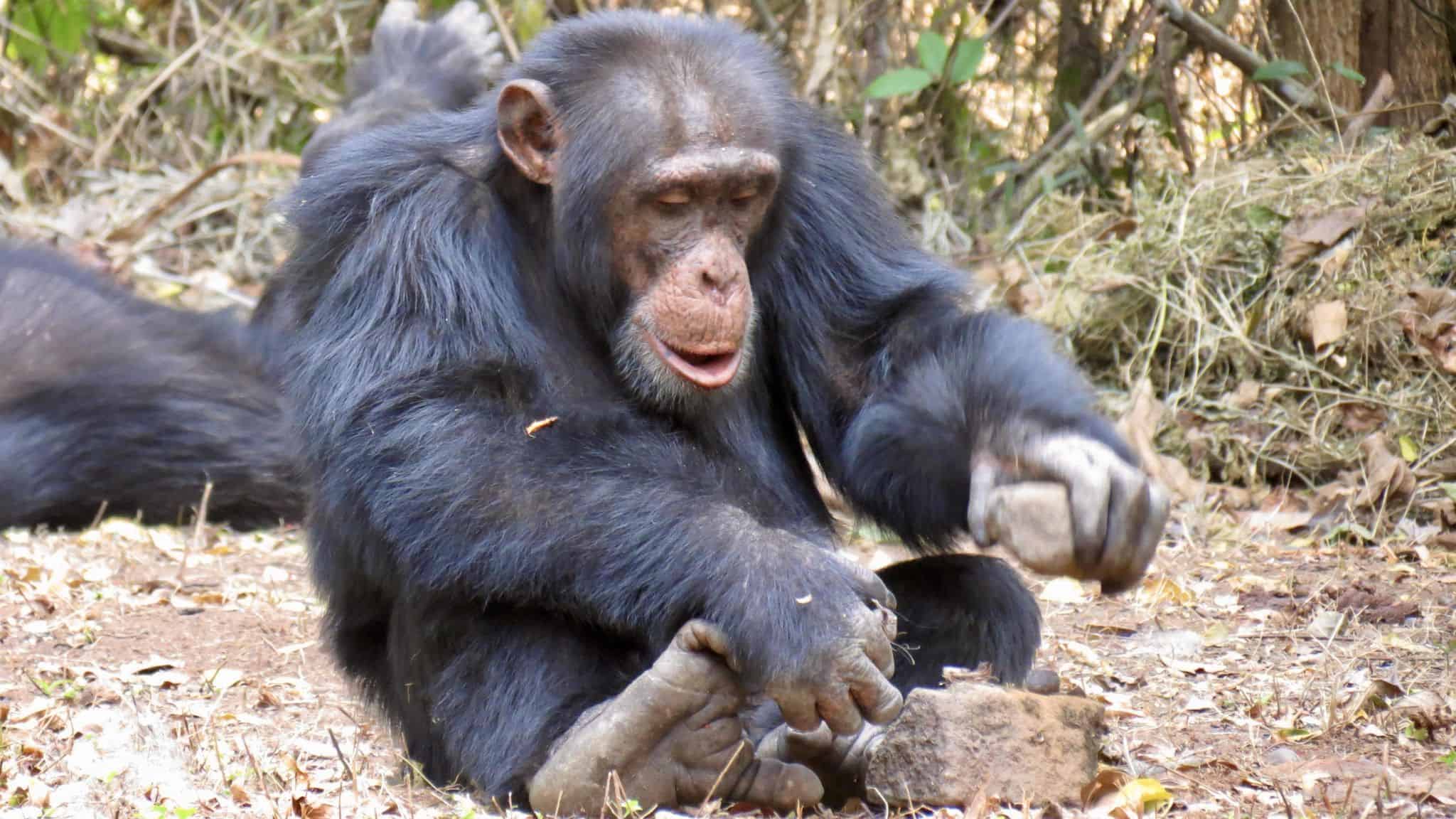:focal(960x722:961x723)/https://tf-cmsv2-smithsonianmag-media.s3.amazonaws.com/filer_public/e4/25/e4257109-554e-4580-8d94-e6c0ef14101d/fishbrainmicrobiome-crsamuelvelasco-lede-scaled.jpg)
Scientists have discovered the strongest evidence yet that healthy vertebrates can have brain microbiomes.
Samuel Velasco / Quanta Magazine
The original version of this story appeared in Quanta Magazine.
Bacteria are in, around and all over us. They thrive in almost every corner of the planet, from deep-sea hydrothermal vents, to high up in the clouds, to the crevices of your ears, mouth, nose and gut. But scientists have long assumed that bacteria can’t survive in the human brain. The powerful blood-brain barrier, the thinking goes, keeps the organ mostly free from outside invaders. But are we sure that a healthy human brain doesn’t have a microbiome of its own?
Over the last decade, initial studies have presented conflicting evidence. The idea has remained controversial, given the difficulty of obtaining healthy, uncontaminated human brain tissue that could be used to study possible microbial inhabitants.
Recently, a study published in Science Advances provided the strongest evidence yet that a brain microbiome can and does exist in healthy vertebrates—fish, specifically. Researchers at the University of New Mexico discovered communities of bacteria thriving in salmon and trout brains. Many of the microbial species have special adaptations that allow them to survive in brain tissue, as well as techniques to cross the protective blood-brain barrier.
Matthew Olm, a physiologist who studies the human microbiome at the University of Colorado, Boulder, and was not involved with the study, is “inherently skeptical” of the idea that populations of microbes could live in the brain, he said. But he found the new research convincing. “This is concrete evidence that brain microbiomes do exist in vertebrates,” he said. “And so the idea that humans have a brain microbiome is not outlandish.”
While fish physiology is, in many ways, similar to humans’, there are some key differences. Still, “it certainly puts another weight on the scale to think about whether this is relevant to mammals and us,” said Christopher Link, who studies the molecular basis of neurodegenerative disease at the University of Colorado, Boulder, and was also not involved in the work.
Irene Salinas, who studies fish immune systems at the University of New Mexico, probed the fish brain for microbes. Now she’s looking for them in mice brains, too. Courtesy of Irene Salinas/https://tf-cmsv2-smithsonianmag-media.s3.amazonaws.com/filer_public/73/47/7347cafd-de3e-4989-a766-3366cd347d20/irene-salinas_crcourtesy-of-irene-salinasv2_web.jpg)
The human gut microbiome plays a critical role in the body, communicating with the brain and maintaining the immune system through the gut-brain axis. So it isn’t totally far-fetched to suggest that microbes could play an even larger role in our neurobiology.
Fishing for microbes
For years, Irene Salinas has been fascinated by a simple physiological fact: The distance between the nose and the brain is quite small. The evolutionary immunologist, who works at the University of New Mexico, studies mucosal immune systems in fish to better understand how human versions of these systems, such as our intestinal lining and nasal cavity, work. The nose, she knows, is loaded with bacteria, and they’re “really, really close” to the brain—mere millimeters from the olfactory bulb, which processes smell. Salinas has always had a hunch that bacteria might be leaking from the nose into the olfactory bulb. After years of curiosity, she decided to confront her suspicion in her favorite model organisms: fish.
Salinas and a team of researchers including lead author Amir Mani started by extracting DNA from the olfactory bulbs of trout and salmon, some caught in the wild and some raised in her lab. They planned to look up the DNA sequences in a database to identify any microbial species.
These kinds of samples, however, are easily contaminated—by bacteria in the lab or from other parts of a fish’s body—which is why scientists have struggled to study this subject effectively. If they did find bacterial DNA in the olfactory bulb, they would have to convince themselves and other researchers that it truly originated in the brain.
To cover their bases, Salinas’ team studied the fish’s whole-body microbiomes, too. They sampled the rest of the fish’s brains, guts and blood; they even drained blood from the many capillaries of the brain to make sure that any bacteria they discovered resided in the brain tissue itself.
“We had to go back and redo [the experiments] many, many times just to be sure,” Salinas said. The project took five years—but even in the early days it was clear that the fish brains weren’t barren.
As Salinas expected, the olfactory bulb hosted some bacteria. But she was shocked to see that the rest of the brain had even more. “I thought the other parts of the brain wouldn’t have bacteria,” she said. “But it turned out that my hypothesis was wrong.” The fish brains hosted so much that it took only a few minutes to locate bacterial cells under a microscope. As an additional step, her team confirmed that the microbes were actively living in the brain; they weren’t dormant or dead.
Olm was impressed by their thorough approach. Salinas and her team circled “the same question, from all these different ways, using all these different methods—all of which produced convincing data that there actually are living microbes in the salmon brain,” he said.
But if there are, how did they get there?
Invading the fortress
Researchers have long been skeptical that the brain could have a microbiome because all vertebrates, including fish, have a blood-brain barrier. These blood vessels and surrounding brain cells are fortified to serve as gatekeepers that allow only some molecules in and out of the brain and keep invaders, especially larger ones like bacteria, out. So Salinas naturally wondered how the brains in her study had been colonized.
By comparing microbial DNA from the brain to that collected from other organs, her lab found a subset of species that didn’t appear elsewhere in the body. Salinas hypothesized that these species may have colonized the fish brains early in their development, before their blood-brain barriers had fully formed. “Early on, anything can go in; it’s a free-for-all,” she said.
But many of the microbial species were also found throughout the body. She suspects that most bacteria in the fish’s brain microbiomes originated in their blood and guts, and continuously leak into the brain.
“After that first wave of colonization,” she said, “you need to have specific features to go in and out.”
Salinas was able to identify features that let bacteria make the crossing. Some could produce molecules known as polyamines that can open and close junctions, which are like little doors in the barrier that allow molecules to pass through. Others could produce molecules that help them evade the body’s immune response or compete with other bacteria.
Salinas even caught a bacterium in the act. Looking under the microscope, she captured an image of a bacterium frozen in time within the blood-brain barrier. “We literally caught it right in the middle of crossing,” she said.
It is possible that the microbes don’t live freely in the brain tissue but are engulfed by immune cells. That would be the “most boring interpretation of this paper,” Olm said, and would suggest that the fish have adapted to bacterial inhabitants by containing them.
However, if the bacteria are free-living, they could be involved in the body’s processes beyond the brain. It’s possible that the microbes actively regulate aspects of the creatures’ physiology, Salinas suggested, the way human gut microbiomes help regulate the digestive and immune systems.
Fish, of course, are not humans, but they allow a fair comparison, Salinas said. And her work suggests that if fish have microbes living in their brains, it’s possible we have them, too.
Biologists recently probed the brains of healthy salmonids, including rainbow trout (left) and Alaskan Chinook salmon (right), and discovered they were home to living microbes. Left: California Department of Fish and Wildlife Service; Right: U.S. Fish and Wildlife Service/https://tf-cmsv2-smithsonianmag-media.s3.amazonaws.com/filer_public/50/59/50594c2c-b671-48a2-862e-46436db5b348/trout-salmon-diptych_web.jpg)
Impenetrable or not?
Bacteria have been found living in just about every human organ system, but to many scientists the brain is a step too far. The blood-brain barrier has traditionally been seen as “impenetrable,” said Janosch Heller, who studies the barrier at Dublin City University and was not involved in the new research. Plus, the brain has immune cells working overtime to zap any potentially harmful invaders. When microbes have been found in the human brain, they are associated with active infections or typically linked to a breakdown in the barrier due to diseases such as Alzheimer’s.
This assumption was challenged in 2013, when scientists studying the neurological impacts of HIV/AIDS found genetic hints of bacteria in the brains of both sick and healthy people. The findings were the first to suggest that maybe humans could have a brain microbiome in the absence of disease.
“No one believed it ten years ago,” Heller said. Follow-up studies—there haven’t been many—have been inconclusive. “It is very easy to trick yourself into thinking microbes are present because microbial DNA is essentially everywhere,” Olm said. “So it would take a lot of evidence to convince me that it does exist.”
The fish experiment did convince him, and other researchers, that a human brain microbiome is not impossible. What is nearly impossible, however, is confirming that without harming healthy people. To build a case, Link suggested repeating the fish experiment in rodents. “This protocol should be able to be adapted really easily to mouse brains,” Salinas said—and indeed her team has started looking into it. They have found early hints that microbes exist in the olfactory bulbs of healthy mice and, to a lesser extent, throughout the brain.
“There’s no reason, if fish have them, that you wouldn’t have them, or that mice wouldn’t have them,” Link said. If microbes have adapted to cross the fish blood-brain barrier and survive in the fish brain, they could do the same in our bodies. It’s unlikely they would be present at the same levels as they are in fish, he added, “but that doesn’t mean there’s none.”
Even in small numbers, Link said, resident microbes could influence our brain metabolism and immune systems. If they are truly present, this would suggest an extra layer of neurological regulation that we didn’t know existed. We already know that microbes influence our neurobiology: Right now, microbes in your gut are modulating your brain activity through the gut-brain axis by producing metabolites that are sensed by enteric neurons winding through your digestive system.
It’s a fascinating, though unproved, proposition that bacteria in the brain are directly impacting our physiology. However, thanks to research like Salinas’, more scientists are open to the idea that healthy human brains might also be home to microbes.
“Why not?” Heller said. “I’m not shocked anymore that they are there.” The more interesting question, he said, is: “Are they all there for a reason, or are they there by mistake?”
This article was originally published by QuantaMagazine.org, an editorially independent online publication launched by the Simons Foundation to enhance public understanding of science.









Leave a Comment